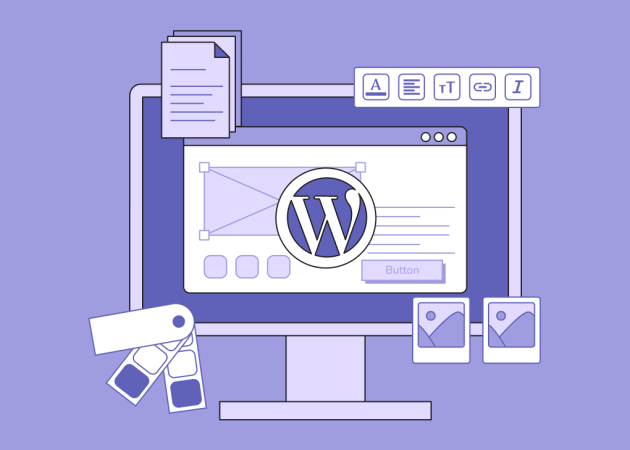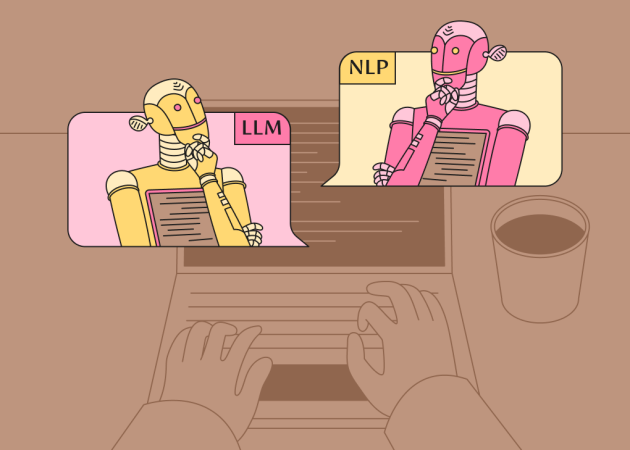
How to Build and Sustain a High-Value White-Label WordPress Partnership
Contents
Contents
Running a digital agency implies a constant balance between growth opportunities and operational capacity. And sometimes the right way to deliver exceptional work for your clients is by partnering with specialists who can extend your capabilities without compromising quality or your client relationships.
White-label WordPress partnerships offer that extension, but there is a caveat. Whether you are considering your first white-label arrangement or looking to improve an existing one, the way you structure your collaboration determines everything from project turnaround times to client satisfaction.
This article walks you through the whole process of building and nurturing a partnership that actually works — one where your clients rest assured that everything goes according to plan.
Vetting Your White-Label WordPress Development Partner
Your partnership starts long before the onset of the first project. The vetting process is about finding a partner whose operational maturity matches your agency’s needs.
Yes, technical skills matter. But when you’re choosing a white-label partner, you’re also evaluating their infrastructure for collaboration. Can they handle your workflow, or will you need to adapt to theirs? Do they have established processes, or will you be building the plane while flying it?
Consider these factors:
- Process maturity. Ask about their project intake process, quality assurance (QA) procedures, and project handover protocols. Do they have a structured project management methodology (e.g., Agile, Kanban)?
- Confidentiality and security. Find out whether your partner has a non-disclosure agreement (NDA) ready and maintains secure development environments as standard practice.
- Communication infrastructure. Do they have a dedicated project manager, shared communication channels (e.g., Slack), or scheduled check-ins?
- Team depth and specialization. A white-label agency should offer you access to varied expertise: frontend specialists, backend developers, UX designers, and QA engineers, you name it. This breadth means you’re not limited by one person’s skill set or availability.
Let’s take a look at the available models of WordPress development for digital agencies:
| Independent Specialist | White-Label Agency | |
| Team Structure | Single expert with niche expertise | Professionals across domains (e.g., frontend, backend, UX), including highly skilled tech leads capable of managing, troubleshooting, and offering complex solutions |
| Process Framework | Adapts to each client’s workflow | Established processes and documented standard operating procedures (SOPs) |
| Project Coordination | Client manages workflow and coordination | Built-in project management infrastructure |
| Tools & Infrastructure | Negotiated per project | Pre-established NDAs |
| Post-Launch Support | Depends on ongoing availability | Structured support with defined response protocols |
Individual specialists typically bring expertise in niche areas. This flexibility works well when you have clearly defined requirements and internal capacity to manage coordination and project infrastructure.
White-label agencies operate with established systems already in place. This infrastructure becomes particularly relevant when projects involve multiple specializations (e.g., frontend, backend, UX, integrations) or when you’re managing several projects simultaneously. The choice often comes down to whether you’re optimizing for flexibility or scalability.
Learn how to elevate your WordPress projects in our additional materials:
The Onboarding Phase: Setting Expectations Early
After the white-label partnership agreement is reached, you can start alignment on the project’s fundamental aspects. It typically involves these factors:
- Communication protocols. Who’s the contact person on each side? What’s the expected response time? Which communication channels are for what purposes?
- Technical alignment. At this stage, you can clarify the tech stack, security protocols, and any compliance requirements that must be met.
- Aligning on project flow. This is the right time to discuss how work will be tracked, reviewed, and delivered.
“Onboarding is vital to the project’s future. When we take the time upfront to establish clear processes, shared tools, and communication norms, we eliminate the lion’s share of potential bottlenecks down the line. It’s not the exciting part, but it’s where successful collaborations are really built,” — adds Karyna Poltavska, our Project Manager.
The Anatomy of an Effective Brief
The project brief is the single most important document in your collaboration. This is the space where you translate your client’s business needs and your agency’s creative vision into technical requirements. As a rule of thumb, the more specific you are, the fewer rounds of revisions you’ll encounter.
A WordPress brief typically covers:
| Project Scope and Objectives | What problem is this solving for your client? What does success look like? This context helps white-label specialists make better decisions when they encounter situations not explicitly covered in the spec. |
| Functional Requirements | This includes a clear list of all features and functionalities (e.g., “User registration with social login”). Pages/Templates: List of all unique page templates to be built (e.g., Home, About, Services, Contact). |
| Content Architecture | Outline the content structure, custom post types, taxonomies, and how content should relate to each other. If your client will be managing content, specify the level of editor flexibility needed. |
| Technical Constraints | Mention hosting environment details, must-use plugins, any third-party integrations, performance requirements, and accessibility standards. |
| Timeline and Milestones | Break the project into logical phases with clear deliverables for each. |
Most importantly, when a brief has gaps, an experienced white-label agency will ask the right questions. This approach matters when your clients can have difficulties articulating technical requirements.
For example, they know they need an “online booking system” but haven’t thought through timezone handling, cancellation policies, or email notification workflows. A white-label partner with depth of experience can surface these considerations early on the journey.
Discover how to handle peak seasons, streamline WordPress maintenance, and benefit from modern WordPress solutions in these articles:
In Sync: A Workflow Within Your White-Label Partnership
Process infrastructure might sound bureaucratic, but it’s actually what makes collaboration feel effortless. When both sides know exactly how things work, you spend less time on process coordination and can focus on more strategic priorities.
Shared Tools and Access Protocols
Establish your tool stack:
- Staging and development environments. Your white-label partner should provide staging environments for review and testing before anything touches production. Make sure you have the access you need, when you need it.
- Documentation. Where will technical documentation live? How will it be maintained?
Communication Cadence That Works
Find your middle ground of effective communication:
- Milestone updates. Progress reporting tied to actual deliverables and project phases.
- Communication patterns. Define when and how updates will be shared based on project complexity and scope.
- Ad-hoc availability. Make sure there’s a way to reach the right person when something urgent comes up, but define what qualifies as urgent.
Systematic collaboration prevents projects from veering off track. The goal is to create a shared rhythm and a single source of truth.

How to Manage Feedback Loops and WordPress Project Revisions
Feedback is inevitable in any project requiring white-label WordPress support for agencies. The goal isn’t to eliminate feedback; it’s to make it efficient and actionable.
When reviewing work, specificity is key. To prevent miscommunication, you can provide clear comments with specific instructions. It is also important to consolidate feedback into a single source. If you’re reviewing with clients, collect their input first, then provide one consolidated feedback document to your white-label partner.
Use a feedback template for consistency:
- What element or feature is this about?
- What is the issue or concern?
- What is the expected outcome?
- Priority level (critical, important, nice-to-have)
- Any relevant screenshots, mockups, or references
Software development teams deliver work in complete, tested phases. You’ll typically receive deliverables after they’ve been fully developed and quality-tested, which helps guarantee you’re reviewing cohesive, functional work.
This structure puts more emphasis on your design and specification approval. Early decisions pave the way for everything that follows. If the homepage design you approved later proves to be an issue, making changes at that point may require reworking in several related sections. This can affect both the timeline and budget.
Lastly, scope creep is often an elephant in the room. When additional requests come in, your white-label partner needs to flag them.
“The right partner will help you manage scope by clearly identifying what falls within the original brief and what constitutes additional work. The key is transparency about what’s in scope, what’s additional, and what the trade-offs are. Your white-label partner should help you make these distinctions clearly. This will allow you to maintain timelines and budgets,” — shares Alisa Prudis, our PU Coordinator.
WordPress Project Delivery and Post-Launch Support Protocols
A successful project doesn’t end at launch. A professional project handover guarantees that your team (or your client) is empowered to manage the new website effectively.
The Handover Checklist
A white-label partner will have a standardized handover process. If they don’t, you can create one together. This starts with the technical foundation: a complete, commented codebase in version control, documentation that covers custom functionality and any non-standard implementations, all necessary admin credentials, and details of any third-party services or APIs integrated into the site.
QA should be thoroughly documented as well. Your handover can include cross-browser and responsive testing results, performance benchmarks showing page load times and Core Web Vitals, accessibility audit results, and security scan results.
You can also cover the client-facing materials per request:
- Content management guide tailored to your client’s team.
- Video walkthroughs for any complex features they will be managing.
- Clear maintenance recommendations.
- Documented backup protocols and disaster recovery plans.
These materials will enable your clients to confidently manage their site after launch.
Post-Launch Support
Clarify support parameters before launch. What’s included in the project price? What falls under ongoing support? How are issues triaged? These conversations need to happen during project planning.
Many white-label partnerships include a stabilization period where minor bugs and issues are addressed for a specified period of time. This gives both you and your client breathing room to catch issues that only emerge under real-world use. Beyond that stabilization window, you can establish whether you want an ongoing support retainer or a time-and-materials arrangement for future updates and enhancements.
Our Approach to White-Label WordPress for Agencies
Here’s how we approach white-label WordPress collaboration at Beetroot, and what we’ve learned from working with agencies over the years.
From First Conversation to Smooth Collaboration
We work with a complete range of white-label WordPress development services. When an agency first reaches out to us, we analyze their business model, typical client requirements, and project volume expectations. This process is all about determining whether we’re the right fit for each other.
Once we establish mutual interest, our onboarding process begins. We can run operational alignment workshops where both teams discuss communication preferences, tool ecosystems, and workflow integration points. That is where we’re essentially creating a shared language for how we’ll work together.
We can suggest starting with a pilot project — something substantial enough to be meaningful but contained enough to be low-risk. This gives both sides the chance to experience the collaboration firsthand before committing to a long-term partnership. During this phase, we’re documenting everything: which communication patterns work best, where handoffs need refinement, and what level of detail is suitable in project briefs.
The technical setup happens in parallel. We provision staging environments, configure access to our project management tools, set up repository permissions, and establish the infrastructure that will support all future projects. By the time the pilot project wraps, the operational foundation for a long-term partnership is in place.
The Rhythm of an Active White-Label Software Partnership
Once we’re past onboarding, projects settle into a predictable flow. You send us a project brief, and our project manager reviews it with our technical lead to identify any gaps or clarification needs.
We then provide a detailed estimate and timeline, flagging any technical risks or dependencies we’ve discovered. This is where our team structure helps: we can pull in specialists during scoping to assess feasibility for complex features. If something in the brief seems technically ambitious or has hidden complexity, we surface that immediately rather than discovering it mid-development.
Throughout development, our project managers provide regular updates to confirm we’re on track for the delivery date updates. To learn more about our approach, see our WordPress maintenance services.
Final Thoughts
Your clients hired your agency because they trust you to deliver. The right white-label software partnership doesn’t change that trust — it gives you the infrastructure and team capacity to deliver on it consistently, at scale, without sacrificing quality or burning out your team. Nurture a tech partnership that supports your most ambitious projects. White-label WordPress for agencies — drop us a line.
FAQs
Who is responsible for communicating with my end-client?
Your agency maintains the direct client relationship. All our communication flows through you, using your branding and following your preferred communication style.
How do you ensure the quality of the code?
Quality is built into our process. Every code commit goes through automated testing, all developers follow WordPress coding standards, and we conduct peer code reviews before merging any feature. Each project milestone includes formal QA testing across browsers and devices, performance benchmarking, and security scanning.
What project management tools (Jira, Asana) are you comfortable working with?
We’re familiar with various popular platforms, and when client tools are mission-critical, we can adapt (though this would involve additional costs to cover the required extra time). That said, we’ve built automated workflows in our preferred platforms that keep projects running efficiently. Either way, our team maintains centralized project communication and tracking.
What happens if my client requests changes that are out of the scope of work (SOW)?
We identify scope changes and communicate their impact. When requests fall outside the original project brief, we work on a clear assessment: the nature of the change, its impact on timeline and budget, and recommended next steps. This enables you to make informed decisions about whether to incorporate the work as an additional phase, adjust project scope, or manage expectations with your client.
How do you handle urgent requests or bug fixes?
It depends on the urgency and our current engagement with your agency. During active projects and stabilization periods, we have defined response protocols. For agencies with ongoing support retainers, we maintain dedicated capacity for urgent issues. For time-and-materials arrangements, urgent requests get prioritized in our queue, though response time depends on our current workload. The key is having this conversation beforehand so you know exactly what to expect when your client has an emergency.
Subscribe to blog updates
Get the best new articles in your inbox. Get the lastest content first.
Recent articles from our magazine
Contact Us
Find out how we can help extend your tech team for sustainable growth.







